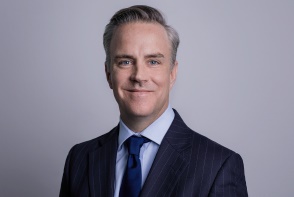

In an increasingly connected and globalized world, the insurance industry needs to work together to understand and accommodate the many disruptions it faces today and in the future, said Sean Kevelighan, CEO of the Insurance Information Institute (I.I.I.), during his keynote speech at the American Society of Workers’ Compensation Professionals (AMCOMP) Fall Meeting held recently in New York.
At the event, Kevelighan discussed how the insurance industry can provide stability amidst so much uncertainty.
“Disruption is everywhere,” he said during his speech. “Our mission at I.I.I. is to improve the public understanding of insurance, what it is and how it works. It sounds very simple, but it will take a lot of work and needs a lot of work.”

This is because the industry itself is still working to understand the disruptions it is facing, he explained. While natural catastrophes have been a significant focus for the industry, such as fires and flooding, it has also seen an increase in frequency and severity of man-made catastrophes, he said.
“Cyber risk is probably one of the largest man-made catastrophes that we’re dealing with everyday more and more,” he stated. “I personally lived through a hack incident at Citi Group when I was head of the global consumer banking business. These are big incidents, and they will only continue.”
He cited other sources of man-made disruption within the insurance industry as autonomous vehicles, globalization, geopolitics, the Internet of Things and trends toward big data.
“It will be fascinating to see what happens in the workers comp field as a result of leveraging big data,” he said. “The question is whether we can do so in an efficient and productive way, especially given the regulatory environment.”
Indeed, regulation has been an increasing source of disruption for the industry as well, he said, particularly with the advent of The Dodd-Frank Wall Street Reform and Consumer Protection Act of 2010 (Dodd-Frank) following the financial crisis.
“We have seen a significant amount of new regulation come into the world as a result of the financial crisis,” he said. “This is normal, and in a lot of ways understandable, but the question is how far will this pendulum swing? At this point, we’re truly seeing a tidal wave of regulations. In some ways, I can understand why, but I think the industry needs to continue asking why, when the pendulum will swing back and whether these regulations are doing what they intended to do.”
In the midst of the changing landscape, Kevelighan emphasized the importance of collaboration to ensure the insurance industry will provide a source of stability going forward.
“One question I have is whether we as an industry will be able to [adjust] together,” he said. “We’re good at talking about how great the industry is, but we’re not very good right now about collaborating.”
If this can be improved, Kevelighan believes the insurance industry will be well equipped to take on future challenges.
“I think insurance can be a beacon of stability in all of this uncertainty,” he said. “This industry is a very safe, stable and strong industry for the economy. Because of the sustainability of its business model, I see insurance as an industry that has a very strong story to tell.”
Kevelighan took over as CEO of I.I.I. in August, succeeding Robert Hartwig, who headed the organization for 18 years.